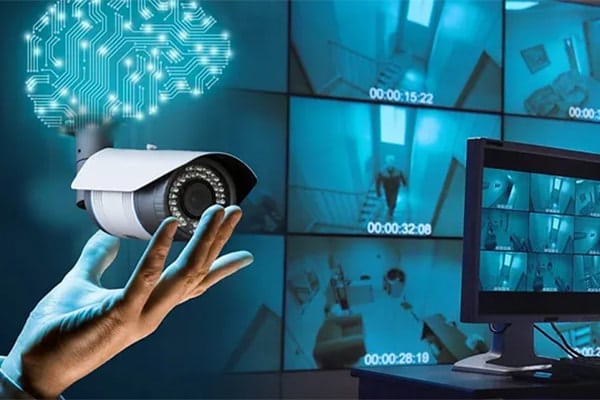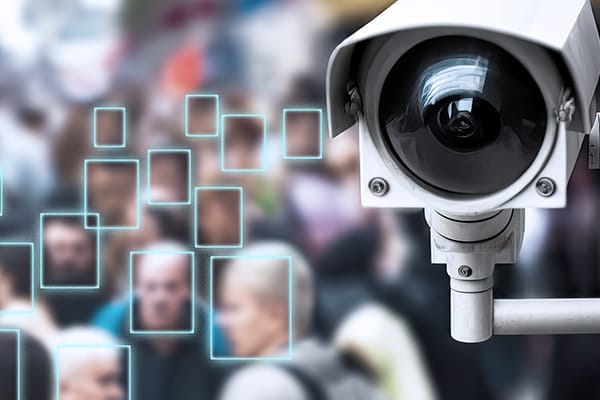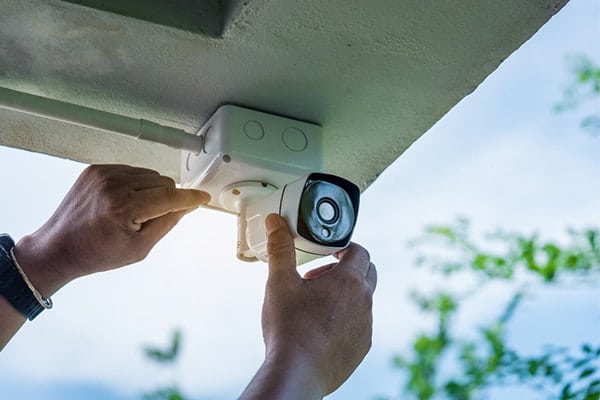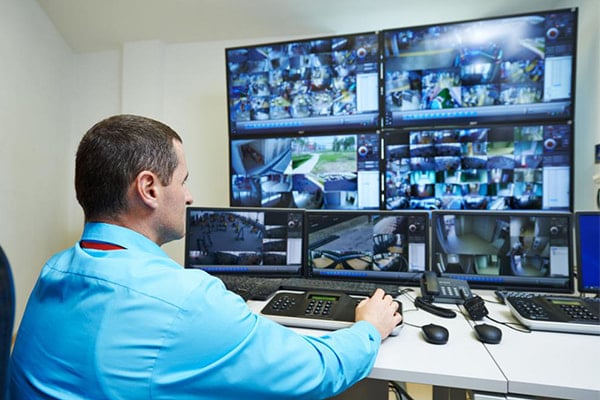What is Video Surveillance?
Video surveillance involves the use of security cameras to monitor and record activities in a specific area or location for security, safety, or oversight purposes. Security cameras capture live footage, which can be viewed in real-time or recorded for later review. This systems involves searching for specific behaviors that might indicate improper actions using surveillance devices like systems installed around valuable assets and critical infrastructure.

Applications of Video Surveillance in Businesses
- Remote Surveillance.
- Facility Protection.
- Operational Monitoring.
- Loss Prevention.
- Vandalism Deterrence.
- Workplace Safety.
- Parking Lot Safety.
- Event Security.
- Public Safety.
- Traffic Monitoring.
- Outdoor Perimeter Security.

Video surveillance is a vital component of any security strategy. Taking into account existing risks and other business obligations will allow for better strategic planning. An effective this systems strategy should include:
- Understanding the specific nature and level of security risk.
- Deciding whether the installation of surveillance cameras can effectively counter identified threats.
- Considering more cost-effective, less intrusive protective solutions.
Components of a Video Surveillance System
- Security Cameras: These can be IP Cameras or Analog Cameras.
- Recording and Monitoring Solutions: In smaller systems, a recording device is used.
- Recorders can be distinguished as Network Video Recorders (NVR) for IP cameras or Digital Video Recorders (DVR) for analog cameras.
- Larger systems often use a dedicated Video Management System (VMS) that offers superior capabilities compared to simple video recorders. Additionally, Video Surveillance as a Service (VSaaS) is a cloud-based, this systems solution that allows security operators to remotely monitor multiple sites using cameras that send video to central cloud storage via the internet.

Beyond cameras, recording, and monitoring, a video surveillance system can optionally integrate with:
- Access Control Systems.
- Video Analytics Systems.
- Physical Security Information Management (PSIM) Systems.
- Fire Alarm Systems.
- Intrusion Detection Systems.
- Queue Management Systems.
A video surveillance system can be used for various purposes, including security, safety, and process monitoring. Typical use cases include live or recorded video monitoring, automated real-time alerts, perimeter protection or intrusion detection, and Automatic License Plate Recognition (ALPR). Video surveillance is often used in public spaces such as streets, parking lots, airports, and shopping malls, as well as in buildings and private homes. Footage captured by video surveillance cameras can be analyzed to identify potential security threats or criminal activities, provide evidence in legal proceedings, or monitor employee productivity and compliance with safety regulations.
===> Learn more: Intercom Systems – Enhancing Efficiency For Your Business
The Role of Video Surveillance Systems in Critical Infrastructure
Video surveillance plays a crucial role in protecting critical infrastructure, including facilities and assets essential to the functioning of society and the economy. Examples of critical infrastructure include power plants, water treatment facilities, transportation systems, and communication networks. Deploying a comprehensive video surveillance system can help enhance the security and resilience of these facilities. Here are some key benefits and considerations:
- Real-Time Monitoring: Video surveillance systems enable real-time monitoring of critical infrastructure, allowing operators to quickly and effectively detect and respond to threats or security incidents.
- Deterrence: The presence of surveillance cameras can deter potential intruders or criminals, making them think twice before attempting unauthorized access or malicious activities.
- Evidence Collection: In the event of a security breach or incident, video footage can be used as evidence for law enforcement and investigation purposes.
- Remote Access: Modern video surveillance systems often provide remote access capabilities, allowing authorized personnel to monitor critical infrastructure from virtually anywhere, even off-site.
- Integration with Other Security Systems: This systems can be integrated with other security measures, such as access control, intrusion detection, and alarms, to create a more comprehensive security solution.
- AI-Driven Video Analytics: Advanced this systems can leverage artificial intelligence and analytics to detect anomalies, recognize patterns, and automatically alert operators to potential threats or incidents.
- Privacy and Legal Concerns: When deploying video surveillance, it is important to consider privacy and legal implications. Surveillance systems must comply with current laws and regulations. Additionally, the privacy of individuals who may be recorded must be respected.
- Cybersecurity: As video surveillance systems become increasingly connected and integrated with other networks, they become potential targets for cyberattacks. Implementing strong cybersecurity measures to protect the surveillance system and the data it generates is essential.
- Operational Costs and Maintenance: Installing and maintaining this system can be expensive, especially for large-scale critical infrastructure. It is crucial to carefully assess costs and benefits and allocate sufficient resources for continuous maintenance and upgrades.
- Training and Policies: Ensure that personnel responsible for monitoring and maintaining this system are adequately trained and familiar with relevant policies and procedures.

This systems is a valuable tool for enhancing the security of critical infrastructure. Organizations and businesses should consider the system’s design, its ability to integrate with other security measures, compliance with laws and regulations, cybersecurity, and staff training to maximize the system’s effectiveness.
If you’re looking to enhance the security of your business infrastructure, contact NT Security to install a Video Surveillance system today!

